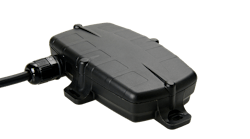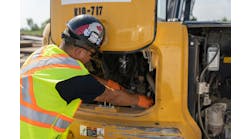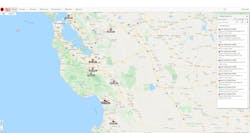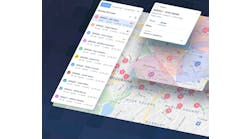Interview with DPL’s Tony Nicoletti: Asset Control Functionality
Tony Nicoletti, CEO, DPL Telematics, tells RER about protecting rental assets, starter disfunction capabilities, prioritizing data and more.
RER: What have been the most recent benefits and capabilities of the telematics system you offer to rental companies?
Nicoletti: For our unwired solutions, increasing the battery life of the devices has been a huge advantage for our rental customers as they are now able to get multiple years out of a set of off-the-shelf batteries before they even need to think about replacing them. It makes our AssetView product line even stronger knowing that customers can rapidly deploy a slap-and-track solution onto just about any asset in their fleet. With equipment theft continuing to rise and replacement machine lead times stretching, having a long-life quick deploying solution is highly beneficial for rental companies – as one Texas customer of ours can attest to after recovering over 35 stolen skid steers since the start of the pandemic.
To protect against rental abuse and safety hazards, we have introduced tip and rollover detection in our devices which allows rental companies to know if their renters are operating the assets in an unsafe manner or potentially rolling them over.
What are some of the new features and capabilities you will be adding in the foreseeable future?
Based on direct customer feedback we are releasing asset control functionality; this allows the vehicle or machine to be locked out without a proper code or key fob being used by an authorized operator. We’re also expanding our Bluetooth tag functionality for tracking of smaller ancillary items such as attachments and buckets.
What are the key types of information that your system shares with rental companies?
We offer the complete fleet solution from basic location tracking with unwired battery powered devices, to location and usage monitoring through our wired AssetCommand product line, to extensive engine direct data capture via J1939 Canbus and finally a plug in OBDII for trucks. We have options for every customer depending how simple or complex their collection data needs are, and all devices are mapped and managed via our easy-to-use software and mobile app.
How does your system help rental companies to bill their customers?
Using our wired telematics products rental customers can see where and exactly how many hours all of their assets or running, so if something is called off rent on a Friday, they will know exactly how many hours the customer may have “inadvertently” run it over the weekend. Additionally, we do offer starter disable capabilities, which allows our rental customers to remotely lock out a machine from starting in the case of non-payment or theft, so just like the utilities if the customer doesn't pay then it gets turned off.
How does your system help rental companies to practice preventive and predictive maintenance?
Tracking runtime and usage of both rental assets as well as company vehicles allows rental companies to know exactly when assets are coming due for maintenance and schedule most efficiently. Our simple-to-use platform includes a preventive maintenance scheduling tool for customers that do not already have one. Additionally, utilizing the richer J1939 engine direct data rental companies can see fault codes, fuel consumption and other diagnostic data which empowers them to take proactive steps before a machine goes to failure.
Sometimes equipment rental companies have commented that they are overwhelmed by too much data. Do you help them to work out what is best and most important for their operation?
Absolutely! This is one of the biggest challenges with telematics data, especially for customers just beginning to utilize and get their head around what is available to them. It is tempting to think, “I want as much data as I can get.” A deluge of data can be incredibly valuable; however, the reality is that many equipment owners are not yet capable of properly digesting available data and often become overwhelmed by it, essentially creating more work than benefit. There can be an advantage to seeing a red stop lamp that indicates a piece of equipment is on rent and the customer is driving it to failure.
But does knowing 100 fault codes really help, or is it noise? If your goal is to improve billing and service scheduling, then you may only need location and usage monitoring – which is available in many telematics products. If you are concerned about theft or suspicious customers, you probably do not need a data-intensive hardwired product, but rather something you can “slap and track” to make sure your rental asset is returned. We work with each customer to assess their needs and pare the appropriate solution.
In the past, often rental companies felt they couldn’t afford telematics systems. Are they now more affordable for smaller rental companies?
When we first started as a telematics provider 21 years ago, the devices were the size of bread boxes, had to be installed on the exterior of the machine and cost literally 10 times what they do today. Like all technology, telematics has gotten smaller, more powerful and of course more affordable. Referring to the previous question regarding data complexity, devices are no longer “one size fits all” since customers can pair the exact product to their needs, today there is a solution for every customer and every budget.






